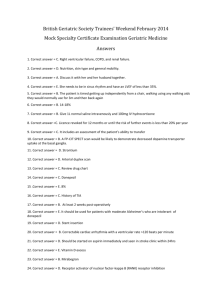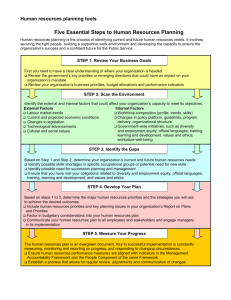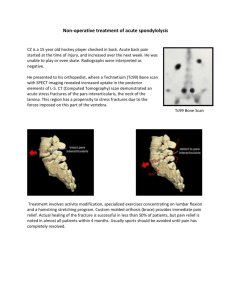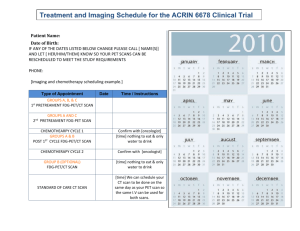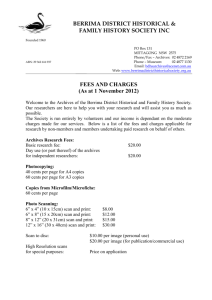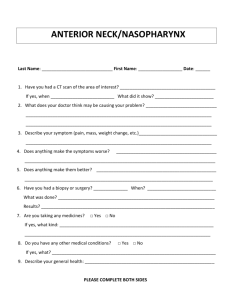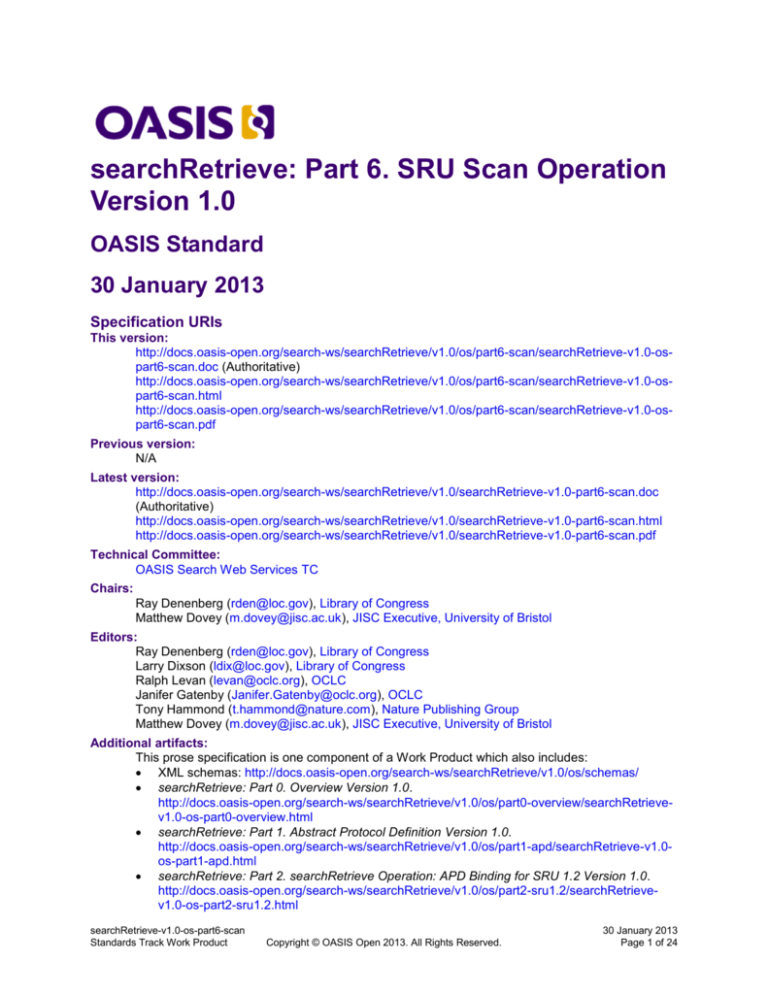
searchRetrieve: Part 6. SRU Scan Operation
Version 1.0
OASIS Standard
30 January 2013
Specification URIs
This version:
http://docs.oasis-open.org/search-ws/searchRetrieve/v1.0/os/part6-scan/searchRetrieve-v1.0-ospart6-scan.doc (Authoritative)
http://docs.oasis-open.org/search-ws/searchRetrieve/v1.0/os/part6-scan/searchRetrieve-v1.0-ospart6-scan.html
http://docs.oasis-open.org/search-ws/searchRetrieve/v1.0/os/part6-scan/searchRetrieve-v1.0-ospart6-scan.pdf
Previous version:
N/A
Latest version:
http://docs.oasis-open.org/search-ws/searchRetrieve/v1.0/searchRetrieve-v1.0-part6-scan.doc
(Authoritative)
http://docs.oasis-open.org/search-ws/searchRetrieve/v1.0/searchRetrieve-v1.0-part6-scan.html
http://docs.oasis-open.org/search-ws/searchRetrieve/v1.0/searchRetrieve-v1.0-part6-scan.pdf
Technical Committee:
OASIS Search Web Services TC
Chairs:
Ray Denenberg (rden@loc.gov), Library of Congress
Matthew Dovey (m.dovey@jisc.ac.uk), JISC Executive, University of Bristol
Editors:
Ray Denenberg (rden@loc.gov), Library of Congress
Larry Dixson (ldix@loc.gov), Library of Congress
Ralph Levan (levan@oclc.org), OCLC
Janifer Gatenby (Janifer.Gatenby@oclc.org), OCLC
Tony Hammond (t.hammond@nature.com), Nature Publishing Group
Matthew Dovey (m.dovey@jisc.ac.uk), JISC Executive, University of Bristol
Additional artifacts:
This prose specification is one component of a Work Product which also includes:
XML schemas: http://docs.oasis-open.org/search-ws/searchRetrieve/v1.0/os/schemas/
searchRetrieve: Part 0. Overview Version 1.0.
http://docs.oasis-open.org/search-ws/searchRetrieve/v1.0/os/part0-overview/searchRetrievev1.0-os-part0-overview.html
searchRetrieve: Part 1. Abstract Protocol Definition Version 1.0.
http://docs.oasis-open.org/search-ws/searchRetrieve/v1.0/os/part1-apd/searchRetrieve-v1.0os-part1-apd.html
searchRetrieve: Part 2. searchRetrieve Operation: APD Binding for SRU 1.2 Version 1.0.
http://docs.oasis-open.org/search-ws/searchRetrieve/v1.0/os/part2-sru1.2/searchRetrievev1.0-os-part2-sru1.2.html
searchRetrieve-v1.0-os-part6-scan
Standards Track Work Product
Copyright © OASIS Open 2013. All Rights Reserved.
30 January 2013
Page 1 of 24
searchRetrieve: Part 3. searchRetrieve Operation: APD Binding for SRU 2.0 Version 1.0.
http://docs.oasis-open.org/search-ws/searchRetrieve/v1.0/os/part3-sru2.0/searchRetrievev1.0-os-part3-sru2.0.html
searchRetrieve: Part 4. APD Binding for OpenSearch Version 1.0.
http://docs.oasis-open.org/search-ws/searchRetrieve/v1.0/os/part4opensearch/searchRetrieve-v1.0-os-part4-opensearch.html
searchRetrieve: Part 5. CQL: The Contextual Query Language Version 1.0.
http://docs.oasis-open.org/search-ws/searchRetrieve/v1.0/os/part5-cql/searchRetrieve-v1.0os-part5-cql.html
searchRetrieve: Part 6. SRU Scan Operation Version 1.0. (this document)
http://docs.oasis-open.org/search-ws/searchRetrieve/v1.0/os/part6-scan/searchRetrievev1.0-os-part6-scan.html
searchRetrieve: Part 7. SRU Explain Operation Version 1.0.
http://docs.oasis-open.org/search-ws/searchRetrieve/v1.0/os/part7-explain/searchRetrievev1.0-os-part7-explain.html
Related work:
Scan Operation. Library of Congress. http://www.loc.gov/standards/sru/specs/scan.html
Abstract:
This is one of a set of documents for the OASIS Search Web Services (SWS) initiative. This
document, “SRU Scan Operation” is the specification of the scan protocol. Scan is a companion
protocol to the SRU protocol which enables searches for specific terms; scan allows the client to
request available terms that may be searched.
Status:
This document was last revised or approved by the membership of OASIS on the above date.
The level of approval is also listed above. Check the “Latest version” location noted above for
possible later revisions of this document.
Technical Committee members should send comments on this specification to the Technical
Committee’s email list. Others should send comments to the Technical Committee by using the
“Send A Comment” button on the Technical Committee’s web page at http://www.oasisopen.org/committees/search-ws/.
For information on whether any patents have been disclosed that may be essential to
implementing this specification, and any offers of patent licensing terms, please refer to the
Intellectual Property Rights section of the Technical Committee web page (http://www.oasisopen.org/committees/search-ws/ipr.php).
Citation format:
When referencing this specification the following citation format should be used:
[SearchRetrievePt6]
searchRetrieve: Part 6. SRU Scan Operation Version 1.0. 30 January 2013. OASIS Standard.
http://docs.oasis-open.org/search-ws/searchRetrieve/v1.0/os/part6-scan/searchRetrieve-v1.0-ospart6-scan.html.
searchRetrieve-v1.0-os-part6-scan
Standards Track Work Product
Copyright © OASIS Open 2013. All Rights Reserved.
30 January 2013
Page 2 of 24
Notices
Copyright © OASIS Open 2013. All Rights Reserved.
All capitalized terms in the following text have the meanings assigned to them in the OASIS Intellectual
Property Rights Policy (the "OASIS IPR Policy"). The full Policy may be found at the OASIS website.
This document and translations of it may be copied and furnished to others, and derivative works that
comment on or otherwise explain it or assist in its implementation may be prepared, copied, published,
and distributed, in whole or in part, without restriction of any kind, provided that the above copyright notice
and this section are included on all such copies and derivative works. However, this document itself may
not be modified in any way, including by removing the copyright notice or references to OASIS, except as
needed for the purpose of developing any document or deliverable produced by an OASIS Technical
Committee (in which case the rules applicable to copyrights, as set forth in the OASIS IPR Policy, must
be followed) or as required to translate it into languages other than English.
The limited permissions granted above are perpetual and will not be revoked by OASIS or its successors
or assigns.
This document and the information contained herein is provided on an "AS IS" basis and OASIS
DISCLAIMS ALL WARRANTIES, EXPRESS OR IMPLIED, INCLUDING BUT NOT LIMITED TO ANY
WARRANTY THAT THE USE OF THE INFORMATION HEREIN WILL NOT INFRINGE ANY
OWNERSHIP RIGHTS OR ANY IMPLIED WARRANTIES OF MERCHANTABILITY OR FITNESS FOR A
PARTICULAR PURPOSE.
OASIS requests that any OASIS Party or any other party that believes it has patent claims that would
necessarily be infringed by implementations of this OASIS Committee Specification or OASIS Standard,
to notify OASIS TC Administrator and provide an indication of its willingness to grant patent licenses to
such patent claims in a manner consistent with the IPR Mode of the OASIS Technical Committee that
produced this specification.
OASIS invites any party to contact the OASIS TC Administrator if it is aware of a claim of ownership of
any patent claims that would necessarily be infringed by implementations of this specification by a patent
holder that is not willing to provide a license to such patent claims in a manner consistent with the IPR
Mode of the OASIS Technical Committee that produced this specification. OASIS may include such
claims on its website, but disclaims any obligation to do so.
OASIS takes no position regarding the validity or scope of any intellectual property or other rights that
might be claimed to pertain to the implementation or use of the technology described in this document or
the extent to which any license under such rights might or might not be available; neither does it
represent that it has made any effort to identify any such rights. Information on OASIS' procedures with
respect to rights in any document or deliverable produced by an OASIS Technical Committee can be
found on the OASIS website. Copies of claims of rights made available for publication and any
assurances of licenses to be made available, or the result of an attempt made to obtain a general license
or permission for the use of such proprietary rights by implementers or users of this OASIS Committee
Specification or OASIS Standard, can be obtained from the OASIS TC Administrator. OASIS makes no
representation that any information or list of intellectual property rights will at any time be complete, or
that any claims in such list are, in fact, Essential Claims.
The name "OASIS" is a trademark of OASIS, the owner and developer of this specification, and should be
used only to refer to the organization and its official outputs. OASIS welcomes reference to, and
implementation and use of, specifications, while reserving the right to enforce its marks against
misleading uses. Please see http://www.oasis-open.org/policies-guidelines/trademark for above
guidance.
searchRetrieve-v1.0-os-part6-scan
Standards Track Work Product
Copyright © OASIS Open 2013. All Rights Reserved.
30 January 2013
Page 3 of 24
Table of Contents
1
Introduction ........................................................................................................................................... 5
1.1 Terminology ........................................................................................................................................ 5
1.2 References.......................................................................................................................................... 5
1.3 Namespace ......................................................................................................................................... 5
2
Overview and Model ............................................................................................................................. 6
2.1 Operation Model ................................................................................................................................. 6
2.2 Data model.......................................................................................................................................... 6
2.3 Protocol Model .................................................................................................................................... 6
2.4 Processing Model ............................................................................................................................... 7
2.5 Query model ....................................................................................................................................... 7
2.6 Diagnostic Model ................................................................................................................................ 8
2.7 Explain Model ..................................................................................................................................... 8
2.8 Serialization Model ............................................................................................................................. 8
3
Scan Request ....................................................................................................................................... 9
3.1 Summary of Request Parameters ...................................................................................................... 9
3.2 Request Parameter Descriptions ........................................................................................................ 9
3.3 Serialization of Request Parameters ................................................................................................ 11
4
Scan Response .................................................................................................................................. 12
4.1 Summary of Response Elements ..................................................................................................... 12
4.2 Term .................................................................................................................................................. 12
4.3 whereinList ........................................................................................................................................ 12
4.4 Example Scan Response ................................................................................................................. 13
4.5 Diagnostics ....................................................................................................................................... 14
4.6 Echoed Request ............................................................................................................................... 14
5
Extensions .......................................................................................................................................... 15
5.1 Extension Request Parameter .......................................................................................................... 15
5.2 Extension Response Elements: extraResponseData and extraTermData ...................................... 15
5.3 Behavior ............................................................................................................................................ 15
5.4 Echoing the Extension Request........................................................................................................ 16
6
Conformance ...................................................................................................................................... 17
6.1 Client Conformance .......................................................................................................................... 17
6.2 Server Conformance......................................................................................................................... 17
Appendix A.
Acknowledgements ........................................................................................................... 19
Appendix B.
Bindings to Lower Level Protocol (Normative) .................................................................. 20
B.1 Binding to HTTP GET ....................................................................................................................... 20
B.2 Binding to HTTP POST .................................................................................................................... 21
B.3 Binding to HTTP SOAP .................................................................................................................... 21
Appendix C.
Interoperation with Earlier Versions (non-normative) ....................................................... 23
C.1 Operation and Version ..................................................................................................................... 23
searchRetrieve-v1.0-os-part6-scan
Standards Track Work Product
Copyright © OASIS Open 2013. All Rights Reserved.
30 January 2013
Page 4 of 24
1
1 Introduction
2
This is one of a set of documents for the OASIS Search Web Services (SWS) initiative.
3
This document is the specification of the Explain Operation.
4
The documents in this collection of specifications are:
5
6
1. Overview
2. APD
7
3. SRU1.2
8
4. SRU2.0
9
5. OpenSearch
10
6. CQL
11
7. Scan (this document)
12
8. Explain
13
Scan is a companion protocol to SRU1.2 and SRU2.0 (the Search and Retrieve via URL protocol ).
14
1.1 Terminology
15
16
17
The key words “MUST”, “MUST NOT”, “REQUIRED”, “SHALL”, “SHALL NOT”, “SHOULD”, “SHOULD
NOT”, “RECOMMENDED”, “MAY”, and “OPTIONAL” in this document are to be interpreted as described
in [RFC2119].
18
1.2 References
19
All references for the set of documents in this collection are supplied in the Overview document:
20
searchRetrieve: Part 0. Overview Version 1.0
21
22
http://docs.oasis-open.org/search-ws/searchRetrieve/v1.0/csd01/part0-overview/searchRetrieve-v1.0csd01-part0-overview.doc
23
1.3 Namespace
24
All XML namespaces for the set of documents in this collection are supplied in the Overview document:
25
searchRetrieve: Part 0. Overview Version 1.0
26
27
http://docs.oasis-open.org/search-ws/searchRetrieve/v1.0/csd01/part0-overview/searchRetrieve-v1.0csd01-part0-overview.doc
28
searchRetrieve-v1.0-os-part6-scan
Standards Track Work Product
Copyright © OASIS Open 2013. All Rights Reserved.
30 January 2013
Page 5 of 24
29
2 Overview and Model
30
31
32
33
34
While the searchRetrieve operation enables searches for specific terms within the records, the scan
operation allows the client to request a range of the available terms at a given point within a list of
indexed terms. This enables clients to present an ordered list of values and (if supported) how many hits
there would be for a search on a given term. Scan is often used to select terms for subsequent searching
or to verify a negative search result.
35
2.1 Operation Model
36
The SWS initiative defines three operations:
37
38
39
40
41
42
43
44
45
1. SearchRetrieve Operation. The main operation. The SRU protocol defines a request message
(sent from an SRU client to an SRU server) and a response message (sent from the server to the
client). This transmission of an SRU request followed by an SRU response constitutes a
SearchRetrieve operation.
2. Scan Operation. The Scan operation is defined by the Scan protocol, which is this specification.
Similar to SRU, it defines a request message and a response message. The transmission of a
Scan request followed by a Scan response constitutes a Scan operation.
3. Explain Operation. See Explain Model. When a client retrieves an Explain record, this
constitutes an Explain operation.
46
47
Note: In earlier versions a searchRetrieve or scan request carried a mandatory operation parameter. In
version 2.0, there is no operation parameter for either. See Interoperation with Earlier Versions.
48
2.2 Data model
49
50
51
52
53
Search engines often create indexes on the fields that they search. These indexes can consist of all or
part of the contents of single fields or combinations of fields from records in their database. Some of
these indexing search engines are capable of exposing the lists of search terms that they have
generated. An exposable list of search terms is called a scanable index (or index when it is clear from
the context that “scanable index” is meant.)
54
55
Each scanable index is sorted according to an order that is defined by the server and may be different for
different indexes.
56
2.3 Protocol Model
57
The protocol model assumes these conceptual components:
58
-
The client application (CA),
59
-
the Scan protocol module at the client (Scan/C),
60
-
the lower level protocol (HTTP),
61
-
the Scan protocol module at the server (Scan/S),
62
-
the search engine at the server (SE).
63
64
65
66
For modeling purposes this standard assumes but does not prescribe bindings between the CA and
Scan/C and between Scan/S and SE, as well as between Scan/C and HTTP and between Scan/S and
HTTP; for examples of the latter two see Bindings to Lower Level Protocols. The conceptual model of
protocol interactions is as follows:
67
68
At the client system the Scan/C accepts a request from the CA, formulates a searchRetrieve
protocol request (REQ) and passes it to HTTP.
69
70
Subsequently at the server system HTTP passes the request to the Scan/S which interacts with
the SE, forms a searchRetrieve protocol response (RES), and passes it to the HTTP.
searchRetrieve-v1.0-os-part6-scan
Standards Track Work Product
Copyright © OASIS Open 2013. All Rights Reserved.
30 January 2013
Page 6 of 24
71
72
At the client system, HTTP passes the response to the Scan/C which presents results to the CA.
The protocol model is described diagrammatically in the following picture:
73
74
1. CA passes a request to Scan/C.
75
2.
Scan/C formulates a REQ and passes it to HTTP.
76
3.
HTTP passes the REQ to Scan/S.
77
4.
Scan/S interacts with SE to form a RES.
78
5. The RES is passed to HTTP.
79
6.
80
7. Scan/C presents results to CA.
HTTP passes the RES to Scan/C.
81
2.4 Processing Model
82
83
84
85
86
87
The client provides the name of a scanable index, and a term that may or may not be in the index. The
server locates either that term within the index or the term that is closest (in terms of the order defined for
that index), and responds with an ordered list of terms, some before and/or some following the supplied
term. The supplied term itself may or may not be in the index, and if not does not appear in the supplied
list. (The numbers of terms preceding and/or following the supplied term are determined by parameters
supplied in the request.)
88
2.5 Query model
89
90
91
Scan requires support for part of the CQL query language. Specifically, the scanClause which is part of
the scan request takes the form of a CQL search clause. The following is supplied as a very cursory
overview of CQL.
92
93
94
95
96
97
98
99
A CQL query consists of a single search clause, or multiple search clauses connected by Boolean
operators: AND, OR, or AND-NOT. A search clause may include an index, relation, and search term (or a
search term alone where there are rules to infer the index and relation). Thus for example “title = dog” is a
search clause in which “title” is the index, “=” is the relation, and “dog” is the search term. “Title = dog
AND subject = cat” is a query consisting of two search clauses linked by a Boolean operator AND, as is
“dog AND cat”. CQL also supports proximity and sorting. For example, “cat prox/unit=paragraph hat” is a
query for records with “cat” and “hat” occurring in the same paragraph. “title = cat sortby author” requests
that the results of the query be sorted by author.
searchRetrieve-v1.0-os-part6-scan
Standards Track Work Product
Copyright © OASIS Open 2013. All Rights Reserved.
30 January 2013
Page 7 of 24
100
2.6 Diagnostic Model
101
102
Diagnostics can be returned for a number of reasons. Typically, these are fatal errors and no terms will
be returned along with the diagnostic.
103
2.7 Explain Model
104
105
106
107
Every Scan server provides an associated Explain record, retrievable as the response of an HTTP GET at
the base URL for the server. A Scan client may retrieve this record which provides information about the
server’s capabilities. The client may use the information in the Explain record to self-configure and
provide an appropriate interface to the user.
108
109
110
111
112
The server lists the names of all indexes in its Explain file. For those indexes that are scanable, the
attribute “scan” will be set to “true” in the <index> element of the index. (The absence of “scan=’true’” on
the <index> element does not necessarily mean that scan is not supported for that server.) The Explain
file may also include sample requests, and conditions of use (for example mandatory display of copyright
and syndication rights).
113
2.8 Serialization Model
114
115
116
117
Requests can be sent as HTTP GET requests. Some servers support POST requests with the
parameters encoded as form elements. Responses are only defined for XML, but other response
serializations, such as JSON are possible through use of either the httpAccept parameter or through
content negotiation (when supported).
searchRetrieve-v1.0-os-part6-scan
Standards Track Work Product
Copyright © OASIS Open 2013. All Rights Reserved.
30 January 2013
Page 8 of 24
118
3 Scan Request
119
3.1 Summary of Request Parameters
120
The request parameters are summarized in the following table.
121
Table 1. Summary of Request Parameters.
Name
Occurrence
Description or Reference
scanClause
mandatory
See scanClause
responsePosition
optional
maximumTerms
optional
httpAccept
optional
See httpAccept
stylesheet
optional
See stylesheet
extraRequestData
optional
See Extension Request Parameter
See responsePosition and maximumTerms
122
3.2 Request Parameter Descriptions
123
3.2.1 scanClause
124
125
The client supplies the parameter scanClause in the request, indicating the index to be scanned and the
start point within the index.
126
127
The scanClause is expressed as a complete CQL search clause: index, relation, term. The term is the
position within the ordered list of terms at which to start, and is referred to as the start term.
128
For example, the scanClause “title==cat” indicates the index ‘title’ and start term ‘cat’.
129
130
131
The relation and relation modifiers may be used to determine the format of the terms returned. For
example 'title any cat' will return a list of keywords, whereas 'title == cat' would return a list of full title
fields. Range relations such as ‘<’, ‘>’, ‘within’ may not be used.
132
3.2.2 responsePosition and maximumTerms
133
134
135
The client supplies the parameter responsePosition in the request, indicating the position within the list
of terms returned where the client would like the start term to occur. Its value is an integer. The default
value is server defined.
136
137
138
Note that the startTerm may or may not be part of the index. The expression nearest term means the
startTerm if it is part of the index, or if it is not, the term nearest (as defined by the server) to where the
startTerm would have been, if it had been part of the index.
139
140
141
The client also supplies the parameter maximumTerms, the number of terms which the client requests
be supplied in the response. Its value is a positive integer and its default value if not supplied is
determined by the server.
142
Let P and M be the value of responsePosition and maximumTerms respectively.
143
The first term in the list is determined as follows.
144
145
146
If P is zero or less, the nearest term is not included. The first term in the list is the term that
comes Q terms after the nearest term, where Q= |P|+1. (Absolute value of P plus 1) E.g., if P=-1,
then the first term in the list should be the second term following the nearest term.
searchRetrieve-v1.0-os-part6-scan
Standards Track Work Product
Copyright © OASIS Open 2013. All Rights Reserved.
30 January 2013
Page 9 of 24
147
148
149
If P is positive, the first term in the list should be the term that comes Q terms before the nearest
term, where Q= P-1. (E.g., if P=3, this means that the nearest term should be third in the list
which means that the first term in the list should be the second term preceding the nearest term.)
o
150
151
152
153
Note that if P exceeds M, then the start term is not included in the list; all members of the
list precede the start term.
The actual number of terms supplied in the list SHOULD NOT exceed M, but may be fewer, for example if
the end of the term list is reached.
Example
Suppose
the index consists of the following terms in this order: A,B,C,D,E,F,G,H
nearest term is D
maximumTerms = 3
Then:
If startTerm= -1, The list supplied will be F,G,H
If startTerm= 0, the list supplied will be E,F,G
If startTerm= 1, the list supplied will be D,E,F
If startTerm=4, the list supplied will be A,B,C
154
155
3.2.3 httpAccept
156
157
158
The request parameter httpAccept may be supplied to indicate the preferred format of the response.
The value is an internet media type. For example if the client wants the response to be supplied in the
ATOM format, the value of the parameter is ‘application/atom+xml’.
159
The default value for the response type is ‘application/sru+xml’.
160
161
Note:This media type is pending registration. The pre-registration media type application/x-sru+xml
should be accepted.
162
163
164
165
166
The intent of the httpAccept parameter can be accomplished with an HTTP Accept header. Servers
SHOULD support either mechanism. In either case (via the httpAccept parameter or HTTP Accept
header), if the server does not support the requested media type then the server MUST respond with a
406 status code and SHOULD return an HTML message with pointers to that resource in supported
media types.
167
168
169
If a server supports multiple media types and uses content negotiation to determine the media type of the
response, then the server SHOULD provide a URL in the Content-Location header of the response
pointing directly to the response in that mime-type.
170
For instance, if the client had sent the URL
171
http://example.org/scan?scanClause=title=dog
172
with an Accept header of ‘application/rss+xml’,
173
174
175
176
177
then the server SHOULD return a Content-Location value of
http://example.org/sru?scanClause=title=dog&httpAccept=application/rss+xml. This Content-Location
header is returned along with the content itself, presumably in the application/rss+xml format. (It would
also be acceptable to return a redirect to that URL instead, but that behavior is not encouraged as it is
inefficient.)
178
179
The default response type is application/sru+xml. That is, if there is neither an Accept header (or if there
is an Accept header of “*”) nor an httpAccept parameter, the response should be of media type
searchRetrieve-v1.0-os-part6-scan
Standards Track Work Product
Copyright © OASIS Open 2013. All Rights Reserved.
30 January 2013
Page 10 of 24
180
181
application/sru+xml, and a corresponding Content-Location header should be returned with the response.
For example if the request is
182
183
http://example.org/scan?query=dog
a Content-Location header of
184
http://example.org/scan?query=dog&httpAccept=application/sru+xml
185
should be returned.
186
3.2.4 Stylesheet
187
188
189
190
The request parameter ‘stylesheet’ is a URL for a stylesheet, to be used for the display of the response
to the user. The client requests that the server simply return this URL in the response, in the href attribute
of the xml-stylesheet processing instruction before the response xml. (It is likely that the type will be XSL,
but not necessarily so.) If the server cannot fulfill this request it MUST supply a non-surrogate diagnostic .
191
192
193
The purpose is to allow a thin client to turn the response XML into a natively renderable format, often
HTML or XHTML. This allows a web browser or other application capable of rendering stylesheets, to act
as a dedicated client without requiring any further application logic.
194
195
196
197
198
199
200
201
Example
http://z3950.loc.gov:7090/voyager?stylesheet=/master.xsl&query=dinosaur
This requests the server to include the following as beginning of the response:
<?xml version="1.0"?>
<?xml-stylesheet type="text/xsl" href="/master.xsl"?>
<scan:scanResponse ...
3.3 Serialization of Request Parameters
o
202
203
204
205
206
212
213
http://myserver.com/scan?scanClause=dc.title = frog
&responsePosition=13&maximumTerms=25
Example: If the last term returned by the first example was “goat”, ask for the term “goat” and the
24 terms that follow it. From a user perspective, this would be a “page down” through the ordered
list of title terms
o
207
208
209
210
211
Example: Get 25 title terms centered on the word “frog”
http://myserver.com/scan?scanClause=dc.title = goat
&responsePosition=1&maximumTerms=25
Example: if the first term returned by the first example was “eel”, ask for the term “eel” and the 24
terms that precede it. From a user perspective, this would be a “page up” from the original list
through the ordered list of title terms
o
http://myserver.com/scan?scanClause=dc.title = eel
&responsePosition=25&maximumTerms=25
searchRetrieve-v1.0-os-part6-scan
Standards Track Work Product
Copyright © OASIS Open 2013. All Rights Reserved.
30 January 2013
Page 11 of 24
214
4 Scan Response
215
4.1 Summary of Response Elements
216
The response elements are summarized in the following table.
217
Table 2. Summary of Response Elements.
Name
Type
Occurrence
Description and/or Reference
<terms>
sequence of <term>
optional
A sequence of <term> elements which
match the request. See Term.
<diagnostics>
sequence of
<diagnostic>
Optional
A sequence of diagnostics generated
during execution. See Diagnostics.
<extraResponseData>
xmlFragment
Optional
Additional information returned by the
server. See Extensions.
<echoedScanRequest>
<echoedScanRequest>
Optional
The request parameters echoed back to the
client in a simple XML form. See Echoed
Request.
218
4.2 Term
219
The element <term> has the following subelements.
220
Table 3. Subelements of element <term>
221
222
223
224
225
226
Name
Type
Occurrence
Description
<value>
xs:string
mandatory
The term, exactly as it appears in the index.
<numberOfRecords>
xs:nonNegativeInteger
optional
The number of records which would be
matched if the scanClause were to be
searched, with the value of the <value>
element for this term substituted for the
term in the scanClause.
<displayTerm>
xs:string
optional
A string to display to the end user in place
of (or in addition to) the term itself.
<whereInList>
xs:string
optional
See whereInList.
<requestURL>
xs:anyURI
optional
A URL that may be used to send a search
for this term to the server.
<extraTermData>
xmlFragment
optional
Additional information concerning the term.
See Extensions.
4.3 whereinList
whereInList is provided as a hint about where a term occurs in an ordered index. Often, its presence will
explain why fewer terms were returned than requested, but it will also occur when the requested number
of terms has been returned.
The sublement <whereInList> (subelement of <term>) is optional; if supplied it MUST have one of the
following values:
searchRetrieve-v1.0-os-part6-scan
Standards Track Work Product
Copyright © OASIS Open 2013. All Rights Reserved.
30 January 2013
Page 12 of 24
227
'first' (the first term in the index)
228
'last' (the last term in the index),
229
'only' (the only term in the index)
230
'inner' (an interior term)
231
4.4 Example Scan Response
232
233
234
235
236
237
238
239
240
241
242
243
244
245
246
247
248
249
250
251
252
253
254
255
256
257
258
259
260
261
262
263
264
265
266
267
268
269
270
271
272
scanResponse xmlns="http://docs.oasis-open.org/ns/search-ws/sru-2-0-response"
xmlns:xsi=http://www.w3.org/2001/XMLSchema-instance
xmlns:scan="http://docs.oasis-open.org/ns/search-ws/scan"
xsi:schemaLocation=
"http://docs.oasis-open.org/ns/search-ws/sru-2-0-response
sru-2-0-response.xsd">
<scan:terms>
<scan:term>
<scan:value>cartesian</scan:value>
<scan:numberOfRecords>35645</scan:numberOfRecords>
<scan:displayTerm>Carthesian</scan:displayTerm>
<scan:requestURL>
http://myserver.com/sru/search?query=dc.title%3d%22cartesian%22
</scan:requestURL>
</scan:term>
<scan:term>
<scan:value>carthesian</scan:value>
<scan:numberOfRecords>2154</scan:numberOfRecords>
<scan:displayTerm>CarthÉsian</scan:displayTerm>
<scan:requestURL>
http://myserver.com/sru/search?query=dc.title%3d%22carthesian%22
</scan:requestURL>
</scan:term>
<scan:term>
<scan:value>cat</scan:value>
<scan:numberOfRecords>8739972</scan:numberOfRecords>
<scan:displayTerm>Cat</scan:displayTerm>
<scan:requestURL>
http://myserver.com/sru/search?query=dc.title%3d%22cat%22
</scan:requestURL>
</scan:term>
<scan:term>
<scan:value>catholic</scan:value>
<scan:numberOfRecords>35</scan:numberOfRecords>
<scan:displayTerm>Catholic</scan:displayTerm>
<scan:whereInList>last</scan:whereInList>
<scan:requestURL>
http://myserver.com/sru/search?query=dc.title%3d%22catholic%22
</scan:requestURL>
</scan:term>
</scan:terms>
searchRetrieve-v1.0-os-part6-scan
Standards Track Work Product
Copyright © OASIS Open 2013. All Rights Reserved.
30 January 2013
Page 13 of 24
273
274
275
276
277
278
279
<scan:echoedScanRequest>
<scan:scanClause>dc.title="cat"</scan:scanClause>
<scan:responsePosition>3</scan:responsePosition>
<scan:maximumTerms>3</scan:maximumTerms>
<scan:stylesheet>http://myserver.com/myStyle</scan:stylesheet>
</scan:echoedScanRequest>
</scanResponse>
280
4.5 Diagnostics
281
See diagnostic list in the SRU specification.
282
4.6 Echoed Request
283
284
285
286
Very thin clients, such as a web browser with a stylesheet, may not have the facility to have recorded the
request that generated the response it has just received. The server may thus echo the request back to
the client via the response element <echoedScanRequest>. There are no request elements associated
with this functionality, the server may choose to include it or not within a response.
287
288
289
290
291
292
293
294
295
<echoedSearchRetrieveRequest> includes subelements corresponding to request parameters, using the
same name.
Echoed Request Example
<echoedScanRequest>
<scanClause>dc.title = dinosaur</scanClause>
<startPosition>1</startPosition>
<maximumTerms>20</maximumTerms>
</echoedSearchRetrieveRequest>
296
297
searchRetrieve-v1.0-os-part6-scan
Standards Track Work Product
Copyright © OASIS Open 2013. All Rights Reserved.
30 January 2013
Page 14 of 24
298
5 Extensions
299
300
301
Both in the request and in the response, additional information may be provided - in the request by an
extension parameter (whose name is constructed as described next) and in the response by the
<extraResponseData> and <extraTermData> elements.
302
5.1 Extension Request Parameter
303
304
An extension parameter takes on the name of the extension. It must begin with 'x-' : lower case x followed
by hyphen. (Scan will never define a parameter with a name beginning with 'x-').
305
306
307
The extension definition MUST supply a namespace. It is recommended that the extension name be 'x-'
followed by an identifier for the namespace, again followed by a hyphen, followed by the name of the
element within the namespace.
308
309
example
http://z3950.loc.gov:7090/voyager?...&x-info4-onScanFail=search
310
311
312
313
314
315
Note that this convention does not guarantee uniqueness since the extension name will not include a full
URI. The extension owner should try to make the name as unique as possible. If the namespace is
identified by an 'info:srw' URI , then the recommended convention is to name the extension "x-infoNNNXXX" where NNN is the 'info:srw' authority string, and XXX is the name of the extension. Extension
names MUST never be assigned with this form except by the proper authority for the given 'info'
namespace.
316
317
5.2 Extension Response Elements: extraResponseData and
extraTermData
318
319
320
An extension definition may (but need not) define a response, to be carried via the extraResponseData
and/or extraTermData elements. The extension definition indicates the element names, from the
extension’s namespace, which will carry the response information.
321
322
323
324
325
326
example:
<sru:extraResponseData>
<auth:token xmlns:auth="info:srw/extension/2/auth-1.0">
277c6d19-3e5d-4f2d-9659-86a77fb2b7c8
</auth:token>
</sru:extraResponseData>
327
5.3 Behavior
328
329
330
331
332
The response may include extraResponseData and/or extraTermData for a given extension only if the
request included the extension parameter for that extension, and the extension definition prescribes a
response. Thus, a Scan response may never include unsolicited extraResponseData or extraTermData.
For example the response may contain cost information regarding the operation on the server or
database supplying the results. This data must, however, have been requested.
333
334
335
336
337
338
339
If the server does not recognize an extension supplied in an extension parameter, it may simply ignore it.
(For that matter, even if the server does recognize the extension, it may choose to ignore it.) If the
particular request requires some confirmation that it has been carried out rather than ignored, then the
extension designer should define a response. There may even be an element defined in the response for
the server to indicate that it did recognize the request but did not carry it out (and even an indication why).
However, the server is never obliged to include a response. Thus though a response may be included in
the definition of an extension, it may never be designated as mandatory.
searchRetrieve-v1.0-os-part6-scan
Standards Track Work Product
Copyright © OASIS Open 2013. All Rights Reserved.
30 January 2013
Page 15 of 24
340
341
342
343
344
345
346
Thus, the semantics of parameters in the request may not be modified by extensions, because the client
cannot be assured that the server recognizes the extension. On the other hand, the semantics of parts of
the response may be modified by extensions, because the client will be aware that the extension has
been invoked, because extensions are always invoked by the client: the response semantics may be
changed by an extension only if the client specifically requests the change. Even when a client does
request a change in response semantics, it should be prepared to receive regular semantics since
servers are at liberty to ignore extensions.
347
5.4 Echoing the Extension Request
348
349
350
351
352
If the server chooses to echo the request to transform the extension parameter into XML, properly
namespaced (the extension parameter name will not transform to a valid element in the SRU
namespace). If it encounters an unrecognized element and cannot determine the namespace, the server
may either make its best guess as to how to transform the element, or simply not return it at all. It should
not, however, add an undefined namespace to the element as this would invalidate the response.
353
searchRetrieve-v1.0-os-part6-scan
Standards Track Work Product
Copyright © OASIS Open 2013. All Rights Reserved.
30 January 2013
Page 16 of 24
354
6 Conformance
355
356
An SRU 2.0 client or server conforms to this standard if it meets the conditions specified in Client
Conformance or Server Conformance respectively.
357
6.1 Client Conformance
358
6.1.1 Protocol
359
360
The client must implement the protocol model. It must support at least one LLP.
The Scan/C must be able to:
361
1. Accept a request from the CA.
362
363
2. Assign values to parameters and form Scan requests according to the procedures described in
the standard.
364
3. Compose an REQ and pass it to HTTP.
365
4. Accept an RES from HTTP.
366
5. Decompose the RES and present information from it to the CA.
367
6.1.2 scanClause
368
The client must be capable of sending a scanClause.
369
6.1.3 Response Format
370
The client must support the ‘application/sru+xml’ media type for the response.
371
6.1.4 Diagnostics
372
373
The client must support the diagnostic schema and be able to present diagnostics received in an RES to
the CA.
374
6.1.5 Explain
375
The client must be able to retrieve the Explain record.
376
6.2 Server Conformance
377
6.2.1 Protocol
378
379
The server must implement the protocol model; it must support at least one LLP.
The Scan/S must be able to:
380
1. Accept an REQ from HTTP.
381
382
2. Decompose the REQ to determine parameter values and interact with the SE as necessary in
order to process the request.
383
384
3. Assign values to elements and compose an REQ according to the procedures described in the
standard.
385
4. Pass the response to HTTP.
searchRetrieve-v1.0-os-part6-scan
Standards Track Work Product
Copyright © OASIS Open 2013. All Rights Reserved.
30 January 2013
Page 17 of 24
386
6.2.2 scanClause
387
388
The server must support CQL to the extent that it supports a scanClause: it must be able to parse a
search clauses consisting of 'index relation searchTerm'.
389
6.2.3 Response Format
390
The server must support Application/sru+xml for the response.
391
6.2.4 Diagnostics
392
393
The server must support the diagnostic schema and be able to present diagnostic information received
from the SE.
394
6.2.5 Explain
395
The Explain record describing the server must be available at the base URL.
searchRetrieve-v1.0-os-part6-scan
Standards Track Work Product
Copyright © OASIS Open 2013. All Rights Reserved.
30 January 2013
Page 18 of 24
396
Appendix A. Acknowledgements
397
Acknowlegements are supplied in the Overview document:
398
searchRetrieve: Part 0. Overview Version 1.0
399
400
http://docs.oasis-open.org/search-ws/searchRetrieve/v1.0/csd01/part0-overview/searchRetrievev1.0-csd01-part0-overview.doc
searchRetrieve-v1.0-os-part6-scan
Standards Track Work Product
Copyright © OASIS Open 2013. All Rights Reserved.
30 January 2013
Page 19 of 24
402
Appendix B. Bindings to Lower Level Protocol
(Normative)
403
B.1 Binding to HTTP GET
404
405
This annex describes the construction of a Scan 2.0 http: URL to encode parameter values of the form
‘key=value’. Support for Unicode characters is described.
406
B.1.1 Syntax
407
408
409
The client sends a request via the HTTP GET method. The request is a URI as described in RFC 3986.
Specifically it is an HTTP URL of the form:
410
using the standard &-separated key=value encoding for parameters in <querystring>.
411
412
413
414
415
416
417
418
419
420
421
Example
422
B.1.2 Encoding (Client Procedure)
423
424
The following encoding procedure is recommended, in particular, to accommodate Unicode characters
(characters from the Universal Character Set, ISO 10646) beyond U+007F, which are not valid in a URI.
401
425
426
427
<base URL>?<querystring>
Assume:
The base URL is ‘z3950.loc.gov:7090’.
The value of parameter ‘scanClause is ”title exact dinosaur”.
Then the URL would be:
http://z3950.loc.gov:7090/voyager?scanClause=title+exact+dinosaur
And over the wire goes:
GET /voyager?scanClause=title+exact+dinosaur HTTP/1.1
Host: z3950.loc.gov:7090
1. Convert the value to UTF-8.
2. Percent-encode characters as necessary within the value. See RFC 3986 section 2.1.
3. Construct a URI from the parameter names and encoded values.
428
429
430
431
432
Note: In step 2, it is recommended to percent-encode every character in a value that is not in the URI
unreserved set, that is, all except alphabetic characters, decimal digits, and the following four special
characters: dash (-), period (.), underscore (_), tilde (~). By this procedure some characters may be
percent-encoded that do not need to be -- For example '?' occurring in a value does not need to be
percent encoded, but it is safe to do so.
433
B.1.3 Decoding (Server Procedure)
434
435
436
437
438
1. Parse received request based on '?', '&', and '=' into component parts: the base URL, and
parameter names and values.
2. For each parameter:
a. Decode all %-escapes.
b. Treat the result as a UTF-8 string.
439
B.1.4 Example
440
Consider the following parameter:
searchRetrieve-v1.0-os-part6-scan
Standards Track Work Product
Copyright © OASIS Open 2013. All Rights Reserved.
30 January 2013
Page 20 of 24
441
scanClause=dc.title = kirkegård
442
The name of the parameter is "scanClause" and the value is "dc.title = kirkegård"
443
444
445
Note that the first '=' (following "scanClause") must not be percent encoded as it is used as a URI
delimiter; it is not part of a parameter name or value. The second '=' must be percent encoded as it is part
of a value.
446
The following characters must be percent encoded:
447
448
449
450
the second '=', percent encoded as %3D
the spaces, percent encoded as %20
the 'å'. Its UTF-8 representation is C3A5, two octets, and correspondingly it is represented in a
URI as two characters percent encoded as %C3%A5.
451
The resulting parameter to be sent to the server would then be:
452
scanClause=dc.title%20%3D%20kirkeg%C3%A5rd
453
B.2 Binding to HTTP POST
454
Rather than construct a URL, the parameters may be sent via POST.
455
The Content-type header MUST be set to
456
application/x-www-form-urlencoded'
457
458
459
460
POST has several benefits over GET. Primarily, the issues with character encoding in URLs are
removed, and an explicit character set can be submitted in the Content-type HTTP header. Secondly,
very long queries might generate a URL for HTTP GET that is not acceptable by some web servers or
client. This length restriction can be avoided by using POST.
461
The response for SRU via POST is identical to that of SRU via GET.
462
An example of what might be passed over the wire in the request:
463
464
465
466
467
POST /voyager HTTP/1.1
Host: z3850.loc.gov:7090
Content-type: application/x-www-form-urlencoded; charset=iso-8859-1
Content-length: 27
scanClause=title%3Ddinosaur
468
B.3 Binding to HTTP SOAP
469
470
471
SRU via SOAP is a binding to the SOAP recommendation of the W3C. The benefits of SOAP are the
ease of structured extensions, web service facilities such as proxying and request routing, and the
potential for better authentication systems.
472
473
474
In this transport, the request is encoded in XML and wrapped in some additional SOAP specific elements.
The response is the same XML as SRU via GET or POST, but wrapped in additional SOAP specific
elements.
475
B.3.1 SOAP Requirements
476
The specification adheres to the Web Services Interoperability recommendations.
477
478
479
SOAP version 1.1 is required. V(ersion 1.2 or higher may be supported.
The service style is 'document/literal'.
Messages MUST be inline with no multirefs.
searchRetrieve-v1.0-os-part6-scan
Standards Track Work Product
Copyright © OASIS Open 2013. All Rights Reserved.
30 January 2013
Page 21 of 24
480
481
482
483
484
485
The SOAPAction HTTP header may be present, but should not be required. If present its value
MUST be the empty string. It MUST be expressed as:
SOAPAction: ""
As specified by SOAP, for version 1.1 the Content-type header MUST be 'text/xml'. For version
1.2 the header value MUST be 'application/soap+xml'. (End points supporting both versions of
SOAP as well as SRU via POST thus have three content-type headers to consider.)
486
B.3.2 Parameter Differences
487
SRU parameters that cannot be transported via the SOAP binding:
488
489
490
The 'stylesheet' request parameter MUST NOT be sent. SOAP prevents the use of stylesheets to
render the response.
B.3.3 Example SOAP Request
491
492
493
494
495
496
497
<SOAP:Envelope
xmlns:SOAP="http://schemas.xmlsoap.org/soap/envelope/">
<SOAP:Body>
<SRW:scanRequest xmlns:SRW="info:srw/xmlns/1/sru ">
<SRW:scanClause>dinosaur</SRW:query>
<SRW:startPosition>1</SRW:startRecord>
<SRW:maximumTerms>20</SRW:maximumRecords>
498
499
500
</SRW:scanRequest>
</SOAP:Body>
</SOAP:Envelope>
501
searchRetrieve-v1.0-os-part6-scan
Standards Track Work Product
Copyright © OASIS Open 2013. All Rights Reserved.
30 January 2013
Page 22 of 24
503
Appendix C. Interoperation with Earlier Versions (nonnormative)
504
C.1 Operation and Version
505
506
507
508
Earlier versions of the protocol (versions 1.1 and 1.2) included request parameters ‘operation’ and
‘version’, and response element <version>. These are removed from version 2.0. This section is included
to describe (1) differences imposed by their removal; and (2) how version 2.0 servers may interoperate
with clients running earlier versions that include them.
509
C.1.1 Differences Imposed by their Removal
510
C.1.1.1 Operation – Request Parameter
511
512
513
514
Earlier versions as well as this version of Scan express the concept of an operation: a searchRetrieve
operation, a scan operation, and an Explain operation are defined. A searchRetrieve or scan request
carries a mandatory operation parameter whose value is 'searchRetrieve' or 'scan' respectively, allowing
these operations to be distinguished, so that they can both be supported at a single network endpoint.
515
516
517
518
519
520
521
522
This specification defines the scan operation and there is also a searchRetrieve operation (a separate
specification) however there is no operation parameter for either. As for earlier versions, searchRetrieve
and scan may be supported at a single network endpoint because it is heuristically possible to distinguish
these operations: a request includes a scanClause parameter if and only if it is a scan request; it contains
a query parameter if and only if is a searchRetrieve request. However, if a new operation were to be
defined, or a new version of searchRetrieve or scan, then it may no longer be possible to heuristically
distinguish these operations and then it may be necessary to define the operation parameter for one or
more operations.
523
C.1.1.2 Version – Request Parameter and Response Element
524
525
526
527
In earlier versions a version request parameter and response element were defined because it was
assumed that multiple versions might be supported at a single endpoint. With version 2.0, the version
request parameter and response element are removed and it is EXPLICITY ASSUMED that there will be
different endpoints for different versions.
528
C.1.2 Interoperation
529
530
Following are guidelines for interoperation with implementations of earlier versions where the operation or
version parameter or element is used.
502
531
532
A client operating under version 2.0 of Scan SHOULD include NEITHER of the request
parameters ‘operation’ or ‘version’.
533
534
535
536
If a server is operating under version 2.0 and the version parameter is included in a
received request, and the server supports the requested version: It may, if it chooses,
process the request under that version. However, details of how these parameters are treated are
beyond the scope of this standard.
537
538
539
540
541
542
543
If the version parameter is included in a received request, and the server does not
supports the requested version: the request should be rejected and a fatal diagnostic included.
(The server may be able to supply the response according to the requested version – even
though it does not in general support that version. If the server is willing and able to issue the
failure response according to the requested version, then it should do so. However it is not
required to do so, and, unfortunately, failure to do will probably mean that the response cannot be
interpreted by the client.)
544
If the operation parameter is included in a received request:
searchRetrieve-v1.0-os-part6-scan
Standards Track Work Product
Copyright © OASIS Open 2013. All Rights Reserved.
30 January 2013
Page 23 of 24
545
o
If the value of the operation parameter is searchRetrieve, the server may ignore it.
546
547
548
o
If the value of the operation parameter is other than searchRetrieve, the server may
reject the request (with a fatal diagnostic) or may, if it chooses, process the request;
however details of how the request should be processed are out of scope.
searchRetrieve-v1.0-os-part6-scan
Standards Track Work Product
Copyright © OASIS Open 2013. All Rights Reserved.
30 January 2013
Page 24 of 24

